Holiday Destinations Steeped in History
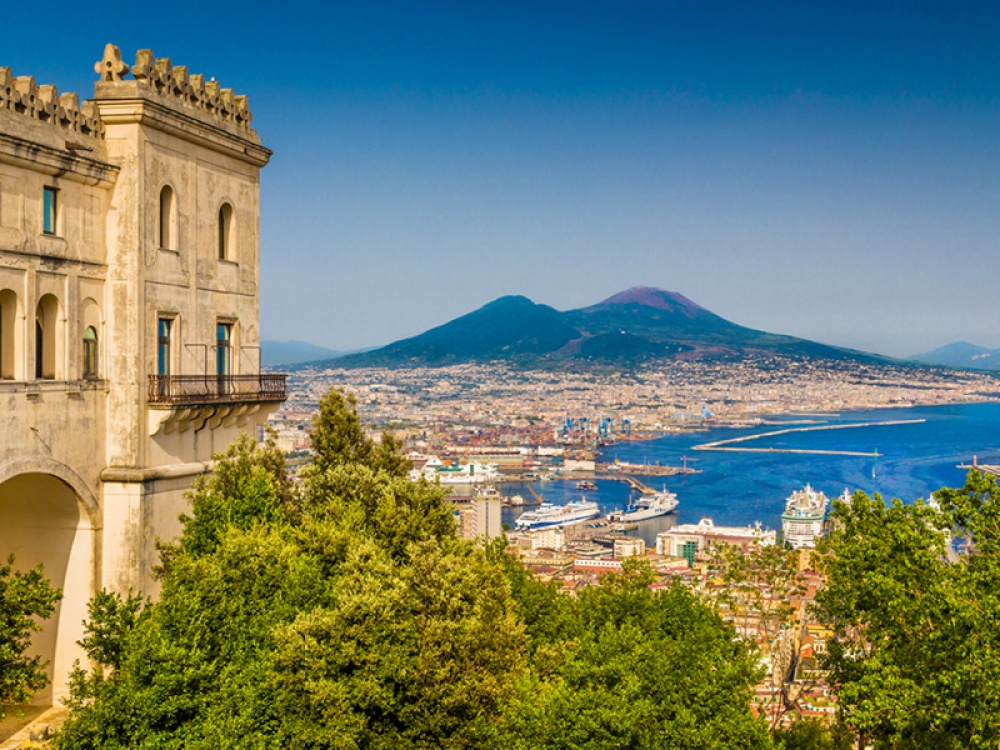
Want a little history with your holiday?
One of the oldest continuously inhabited urban areas in the world, Naples was first established by the Greeks in 100BC. A significant cultural centre, built around the curving Bay of Naples, under the Romans it was a vital link between Greek and Roman society and there is so much history to enjoy in between pizzas here. Considered a capital of the Baroque, it was home to the artist Caravaggio in the 17th century and became an important centre of humanism and the enlightenment movement. Expanded and upgraded by Mussolini, the severe damage Naples suffered during World War II was quickly repaired, and since the late 20th century it has enjoyed significant economic growth with rapid rail links to Rome and Salerno.
The historic centre of Naples is the largest of its kind in Europe, and is now a UNESCO World Heritage Site. The city and its surrounds are also known for their natural beauty, bookended with Vesuvius to the east and the ancient port of Pozzuoli to the west, and Naples itself is a veritable goldmine of stunning churches, creepy crypts, gleaming palaces, and even has tiny beaches and coves within easy reach when you need some cultural down-time. Readily acknowledged as the birth place of the pizza, the city’s ancient cobbled streets and back alleys are peppered with busy bars, restaurants and great pizzerias.
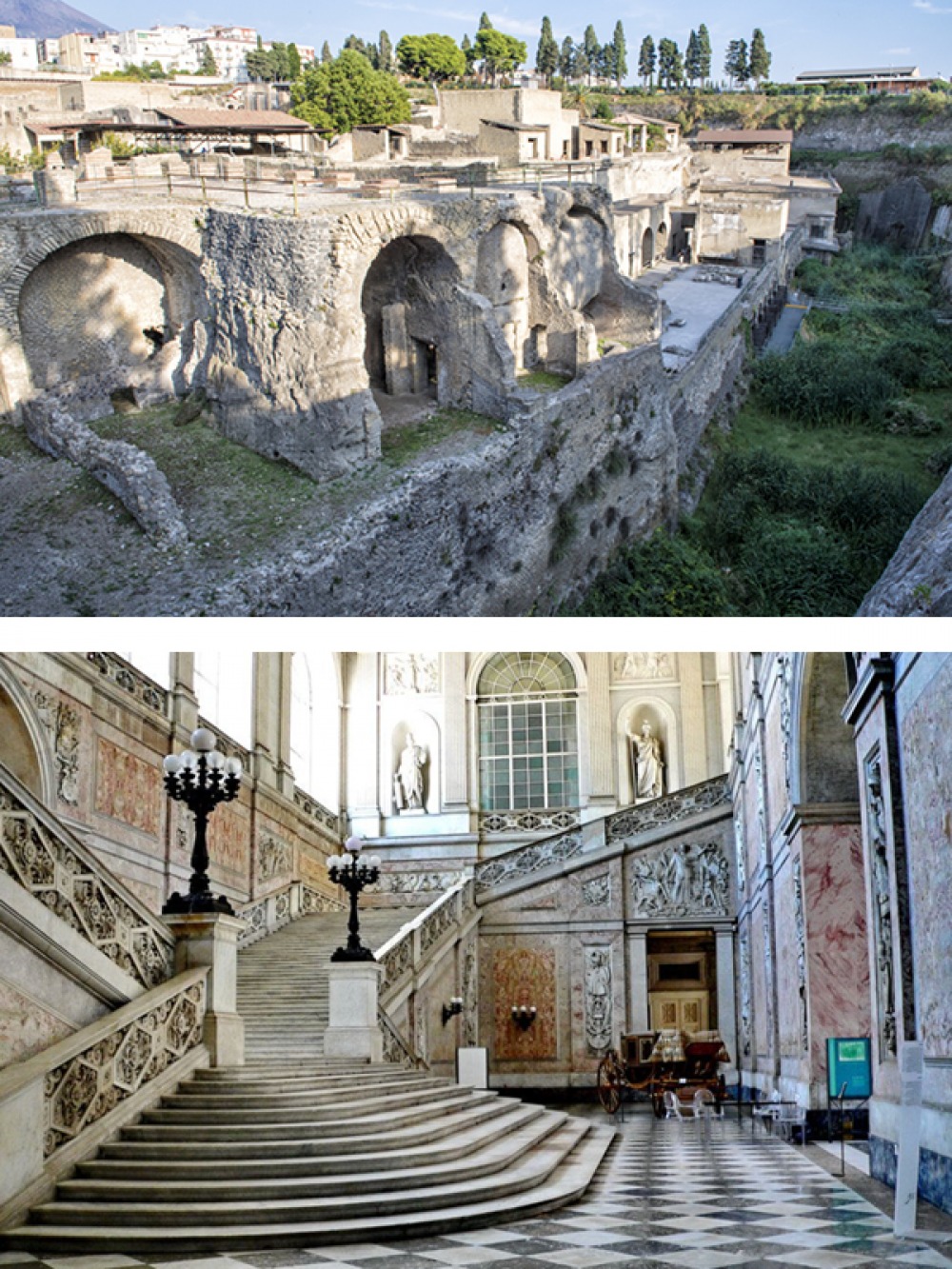
HISTORY HOT SPOTS
This stunning medieval fortress overlooks the city and promises panoramic views from the top. Reach it by the scenic funicular railway and take time to enjoy the remarkable patchwork of the city laid out below.
Museo Archeologico
Housed in the Palazzo deli Studi, at the west end of Piazza Cavour, one of the original gateways into the city, this museum first opened to the public in 1816 and is home to many Greek and Roman masterpieces, sculptures, mosaics and frescoes recused from Pompeii.
Royal Palace of Naples
Unprepossessing on the outside, this palace, museum and historic centre was one of four palaces used by the House of Bourbon. Its many rooms are filled with art and history artefacts, but don’t miss the statues of the former rulers of Naples on the western facade of the building. Displayed in chronological order they begin with the rather amusingly named 12th century Roger the Norman and end with Vittorio Emanuele II.
Casta dell’Ovo
A seafront castle in Naples Bay, and the oldest fortification in Naples, the castle’s name comes from a legend in which the sorcerer Virgil put a magical egg into the foundations to support the fortifications. Legend has it that the egg remains there, along with his bones, but had this egg been broken, the castle would have been destroyed and a series of disastrous events would have followed for Naples.
Piazza del Plebiscito
This huge square sits in front of the Royal Palace, framed by the palace, the Basilica of St Francis of Paola, and the Prefecture and Palace of Salerno. Now a venue for outdoor events and exhibitions, it was restored in the 1990s for the G7 meeting in 1994.
Ruins of Pompeii and Herculaneum
Genuinely moving, Pompeii’s perfectly preserved streets are a reminder of man’s vulnerability to nature. Explore the ruins of the forum, the bathhouse, individual homes and even the local brothel. And whilst Pompeii was wiped out by ash from the eruption of Vesuvius in AD79, nearby Herculaneum was actually covered in lava and has even better preserved scenes of everyday Roman life, including frescoes, mosaics and wooden utensils. There’s even a row of 12 boathouses more recently discovered, along with the remains of more than 300 Romans.
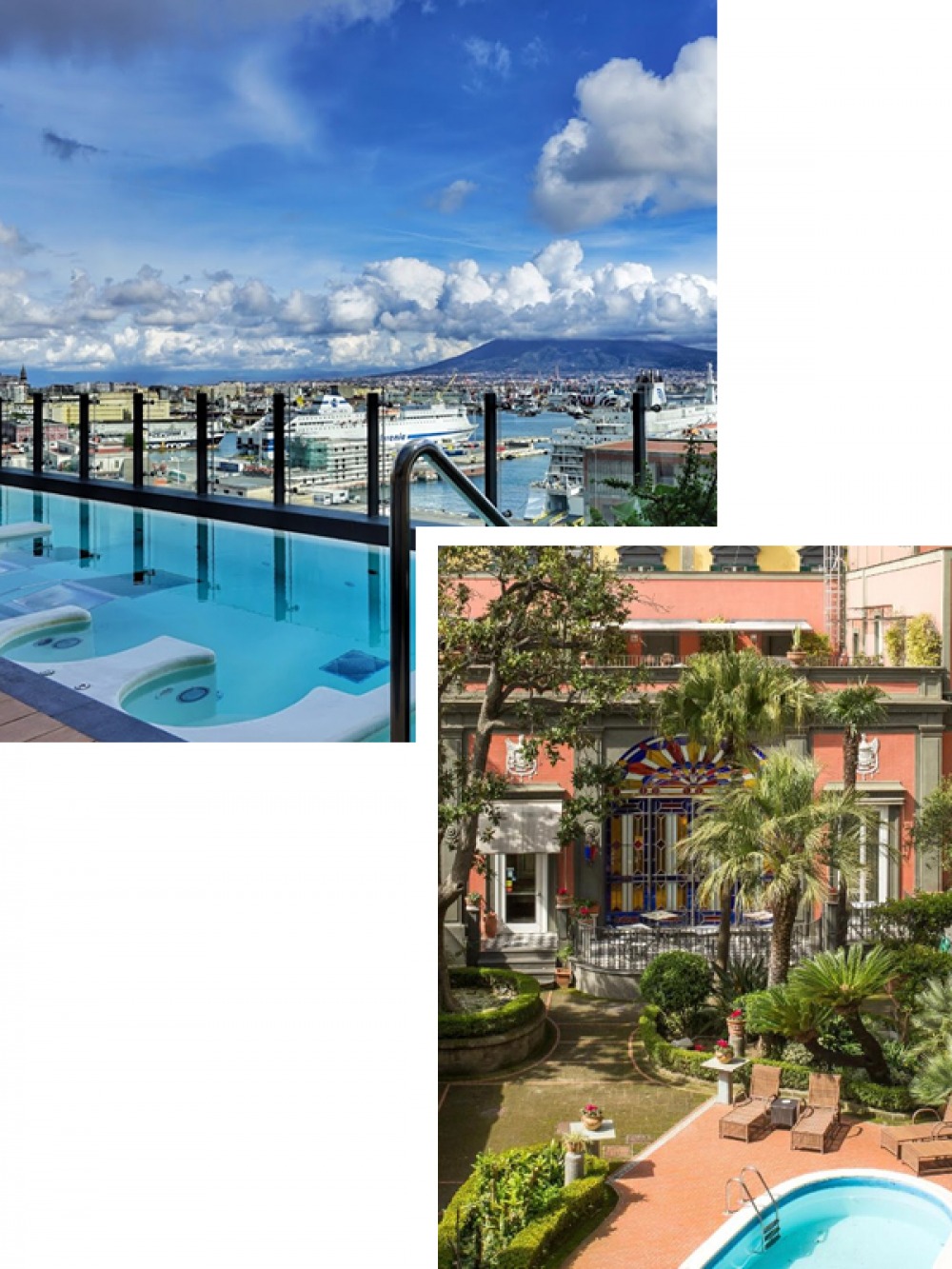
WHERE TO STAY
The luxurious seafront Romeo Hotel is crammed with art and antiques. Rooms are spacious and simple with sleek fittings, and there’s a great restaurant and bar here, but the stand-out feature has to be the roof-top spa with its pool overlooking the bay below and Vesuvius in the distance.
More traditional, Constantinopoli 104 is a two-storey villa, centrally locally but tucked away from the bustle of Via Constantinopoli– an artsy street packed with antique shops. Simple but elegant, high ceilings and marble floors make for a cool interior. In warmer weather breakfast can be taken on the pretty terrace overlooking the hotel’s pool and gardens.
High above the city in leafy Vomero, Parker’s is Naples’ oldest hotel, still filled with crystal chandeliers, Greco- Roman statues and antiques. Rooms are relatively classic but pick one with a view over the city and you’ll find it hard to tear yourself away. There’s also a restaurant on the roof with the same panoramic views.
Eat at one of the many great pizzerias in Naples. There are far too many to mention, but head to Via dei Tribunali (pizza central) and pick one popular with the locals and you can’t go wrong, or grab a slice-to-go go as you stroll the atmospheric streets of this captivating, frenetic city.
Piazza Bellini is a bar-lined square popular with locals and tourists at aperitif time and well worth seeking out, if only to stop and watch the world go by at it’s frantic Neapolitan pace for a while, before bagging a table at the elegant Opera Restaurant on the Via Simone Martini, or Stritt Stritt, a relaxed neighbourhood restaurant serving Neapolitan cuisine and known for its fresh seafood.
Tui fly direct to Naples from Newcastle on Monday and Friday.
Jet2 fly direct to Naples from Leeds Bradford on Wednesday and Sunday.
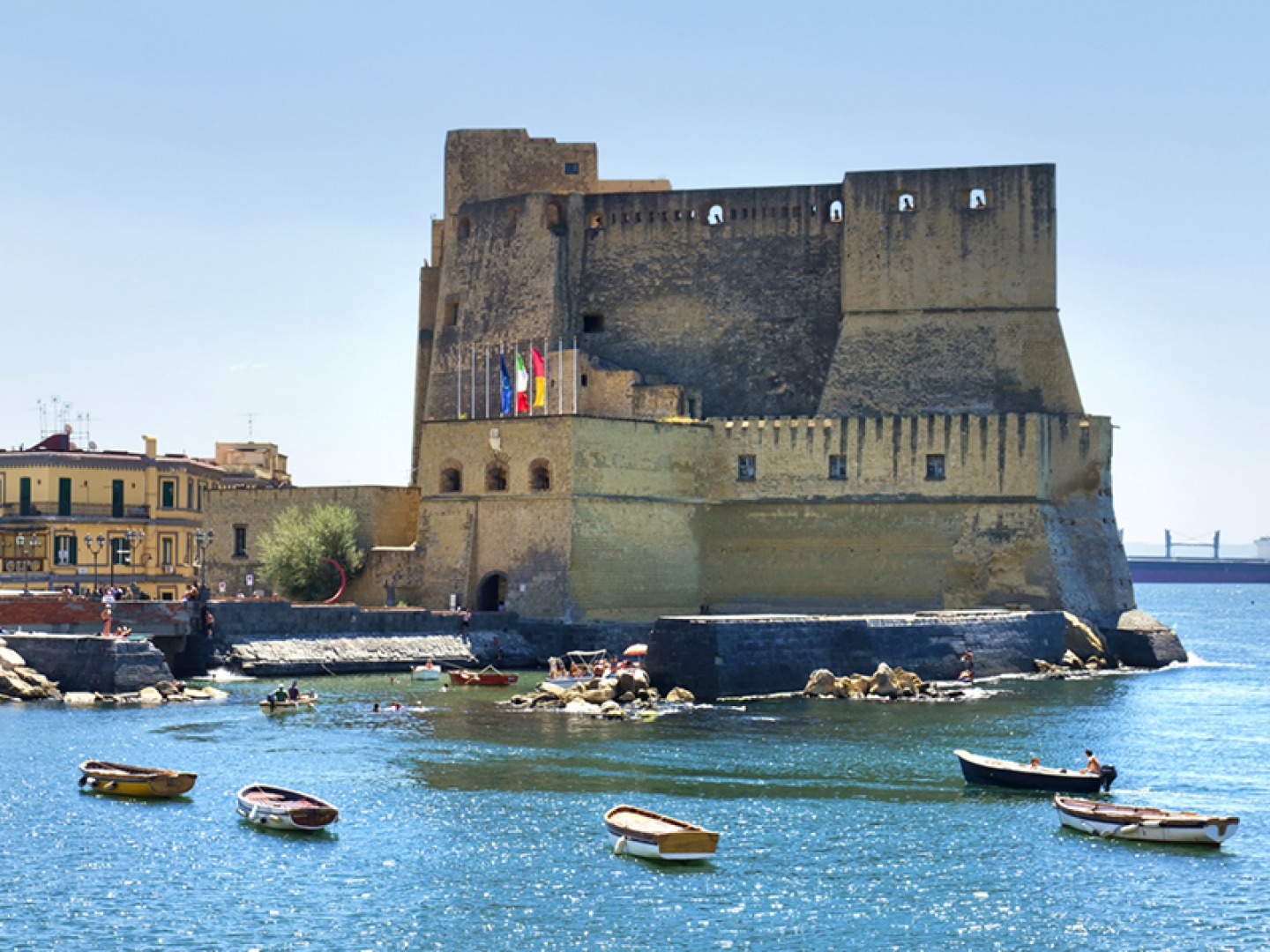
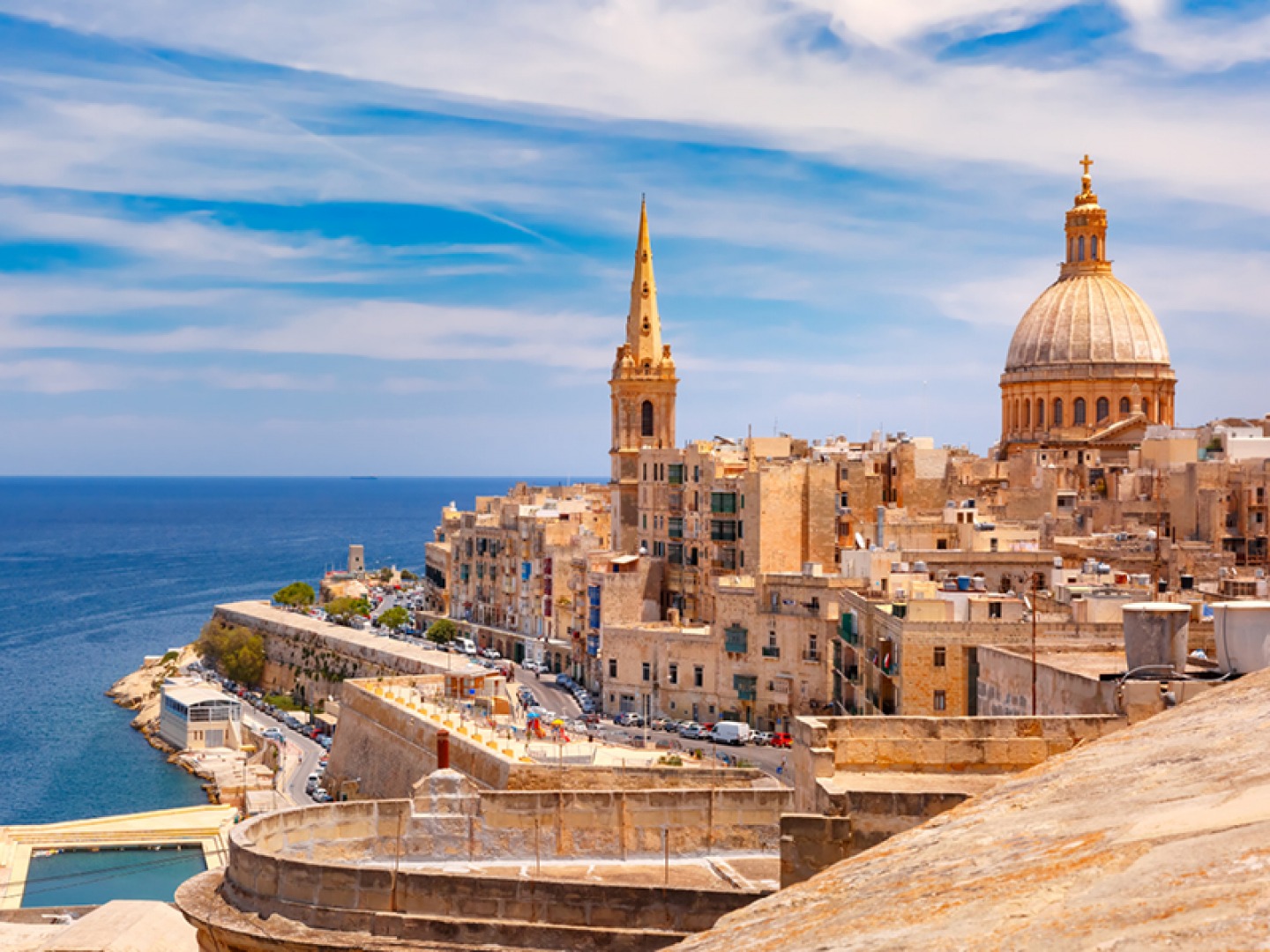
In the Mediterranean, south of Sicily, Malta is actually made up of three islands; Malta, the largest; Gozo, more rural and known for its tranquility; and Comino which is largely uninhabited. There are a staggering 7,000 years of history to explore here, but at only 317km square it’s easy enough to see most of Malta’s rich and turbulent history within a relatively small area.
The three islands can trace their history back to the very start of civilisation and the Phoenicians, Carthaginians and Romans have all left their mark. With some of the oldest freestanding megalithic temples (older than Stonehenge) on Gozo, through to the now very modern Malta, there is so much history to take in here.
The islands were given to the Order of St John in 1530, who ruled here successfully for over two centuries despite attempts to invade, encouraging the arts, architecture and an overall improvement in society, until the French took control in 1798. French rule here lasted just two years, and following a Maltese rebellion, ably assisted by the British and Portuguese, it became a British protectorate in 1813. Malta became a vital naval base for the British and was headquarters of the Mediterranean Fleet, and as a result, immediately came under attack at the start of World War II. In 1942 the island was actually awarded the George Cross (the highest civilian award for gallantry) which appears on Malta’s flag today.
The capital city of Valetta is a UNESCO World Heritage Site and at just one km square, claims to be one of the most concentrated historical areas in the world. Alongside St John’s Co-Cathedral you’ll find museums, fortifications and the Grand Harbour.
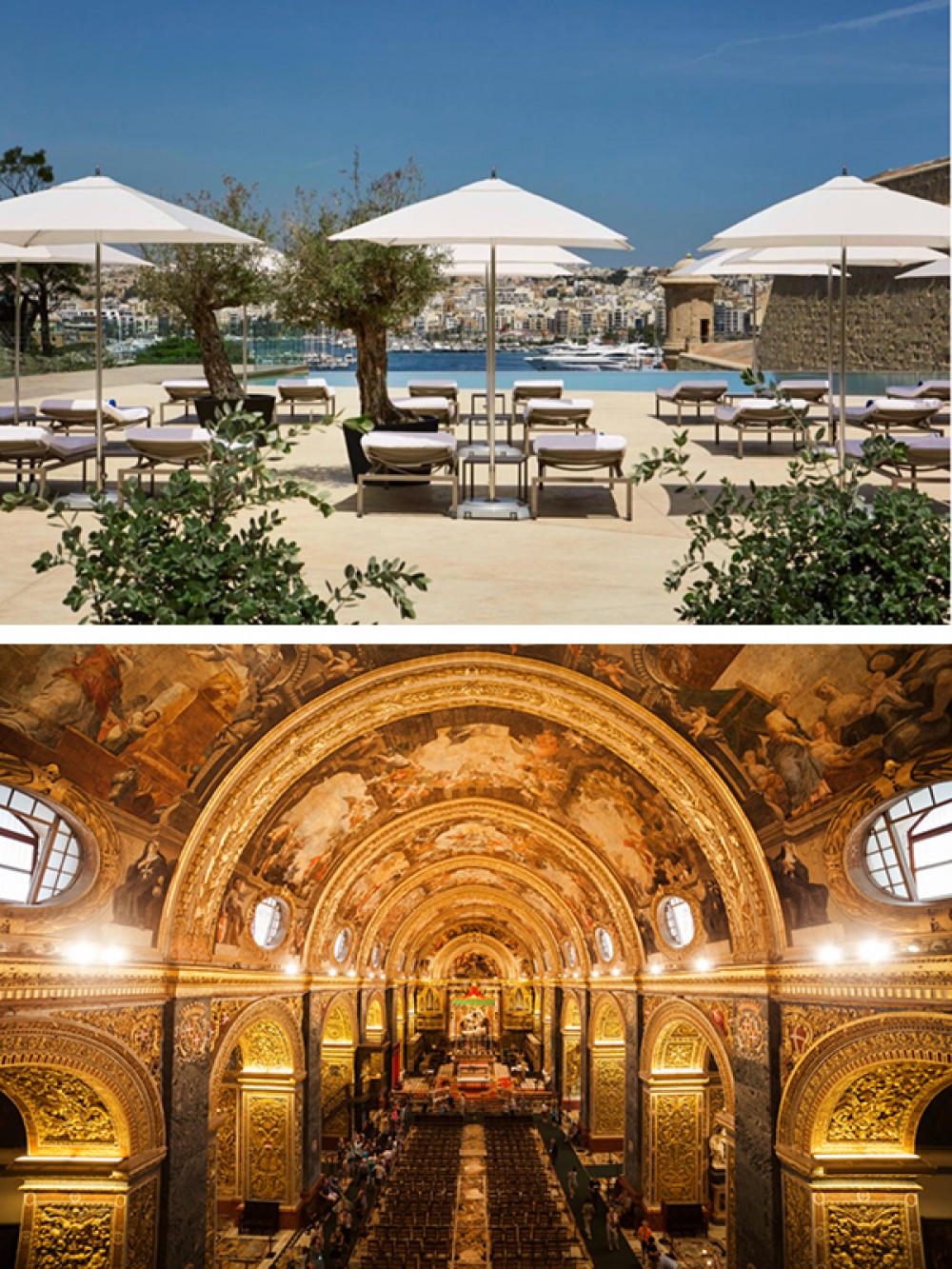
HISTORY HOT SPOTS
The Grandmasters Palace
The Grandmasters Palace in St George’s Square, Valetta was built in 1571 and has been the seat of government ever since. Visit the Palace Armoury which holds weapons from the period of the Knights of Malta, the spectacular Throne Room, and discover the chequered political history of the islands.
St John’s Co-Cathedral
A baroque masterpiece, the cathedral was originally commissioned in 1572, but redesigned in the 17th century into the beauty it is today. Steeped in the history of the Knights of St John, you will also find works by Caravaggio, 16th century illuminated scripts and artefacts chronicling much of Malta’s history.
Fort Rinella
Recent restoration of this Victorian fort means live re-enactment and animated tours can take you through the history of what was the world’s first mechanical fort – a testament to Victorian invention and industrialisation.
Mdina
Mdina, the medieval capital of Malta, is a must-see. A fantastic example of a walled city, there are guided tours through the narrow streets, past elegant churches and palaces. Without cars, it’s as if you’ve stepped back in time.
Auberge de Castille
At the highest point above Valetta, and built as a residence for the Knights of St John in 1574, the now restored castle is a spectacular example of Maltese architecture.
Fort St Angelo
Originally a medieval castle built at the centre of the Grand Harbour, it was rebuilt by the Order of St John as a fort and is best known for its role as the Order’s headquarters during the Great Siege of Malta in 1565. A major redesign in 1690 gave it its current appearance although it was badly damaged during World War II, the fort has since been restored and is now open to the public – it’s home to a museum chronicling the fort’s history in the defence of Malta.
Gozo
There are plenty of interesting sites around in the more tranquil Gozo, where you’ll find Citadel bastions in Victoria, the Megalithic temples of Ggantija in Xaghra ,a UNESCO World Heritage Site, and Calypso’s cave, said to be the location of Homer’s Odyssey. Don’t miss the Blue Lagoon, lying between the island of Comino and islet of Cominotto, where crystal blue waters wash over white sand and give it an ethereal quality – you’ll need to catch a boat to get there but it is well worth the trip.
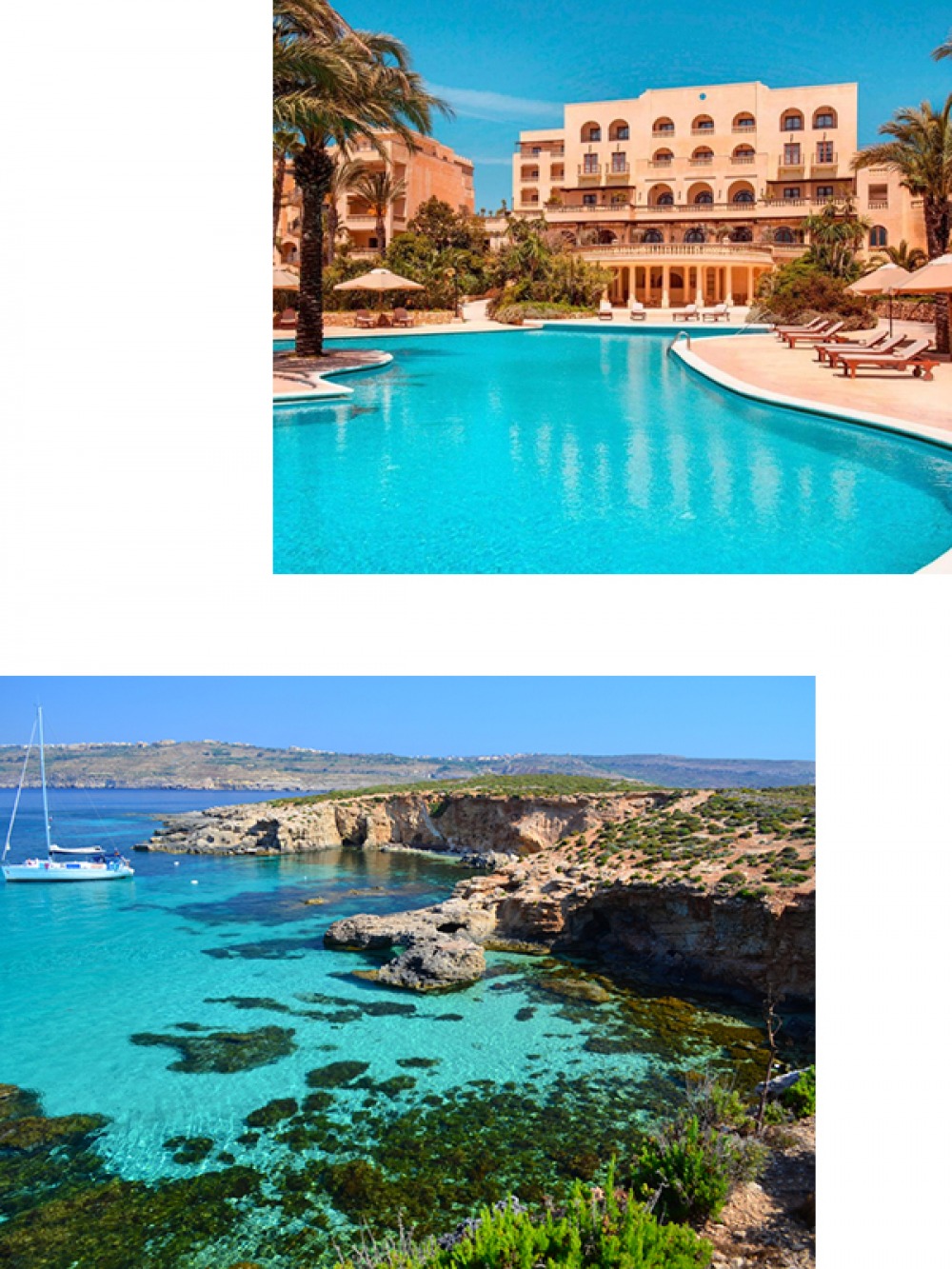
WHERE TO STAY
The iconic Phoenicia is a British Royal family favourite, well known for its Art Deco features. Just outside the ancient City Gate, the hotel has a garden, an outdoor pool, and views over the harbour, and yet all the sights of the Valletta are within walking distance. The famous Palm Court Lounge and bar retains its 1930s feel, with doors leading onto the terrace.
Once the home of one of Malta’s most important noble families, the traditional 16th-century Valletta palazzo Casa Rocca Piccola, with just five spacious rooms and suites, is a historic home-fromhome in the very heart of Malta’s capital.
On Gozo, the Kempinksi Hotel San Lawrenz is on a dramatic stretch of the island’s coast just a little way from the marine conservation area of Dwejra, and one of Gozo’s best dive sites. One of the biggest hotels on the island, its a family-friendly destination with large gardens, pools, a gym and spa, and plenty of outdoor eating areas.
Eat at Rampila, a romantic Mediterranean restaurant in Valletta serving delicious seafood, with views of the floodlit 450-year-old City Gate from the heated terrace.
In the cellar of an old Valetta town house, Legligin is a cosy, friendly bistro serving up Maltese Meze. Chef owner Chris uses the best local suppliers to create dishes which include homemade ravioli, Maltese hotpot and his own handmade chocolates.
Great for lunch, and popular with the locals, Trattoria da Pippo serves up traditional pasta and fresh fish in a fun and friendly space off Valetta’s main drag.
On sister island Gozo, head to Qbajjar near Xwenji Bay where you’ll find great seafood and perfect sea views. In Marsalforn, the family-run II-Kartell has a terrace overlooking the bay and serves up speciality fish dishes and local ribs.
Jet2 operates weekly flights to Malta from Newcastle between March and October.
Jet2 and KLM operate weekly flights to Malta from Leeds Bradford between March and October.
West of mainland Greece, in the Ionian Sea, this rugged island is marked by sandy coves, limestone cliffs and beautiful secluded sandy bays, often accessible only by boat, or the narrow twisty roads which are seemingly only for the intrepid – and goats. Greener than the Aegean Greek islands, the many cypress and olive trees provide a beautiful contrast to the brilliant blue of the surrounding Ionian Sea.
Occupied by the Byzantines, Turks, Venetians, British and Ottomans, before being recognised as a Greek state in 1864, the once turbulent island is now a laid-back holiday destination, and remains quieter than many of Greece’s islands which are often inundated with summer visitors. Kefalonia is home to many charming, tiny villages including Sami, which you might recognise from the 2001 film Captain Corelli’s Mandolin. The capital Argostoli is fairly modern, rebuilt after the devastating earthquake in 1953, whilst Fiscardo, at the northern end of the island, with its elegant Venetian-style buildings painted in pretty pastel colours, managed to survive most of the devastation.
Beach lovers will want to spend every day on the island’s famous Myrtos Beach. North of Argostoli, surrounded by verdant greenery and rocky white cliffs, it is thought to be one of the best beaches in the world, partly because its west-facing position means amazing sunsets.
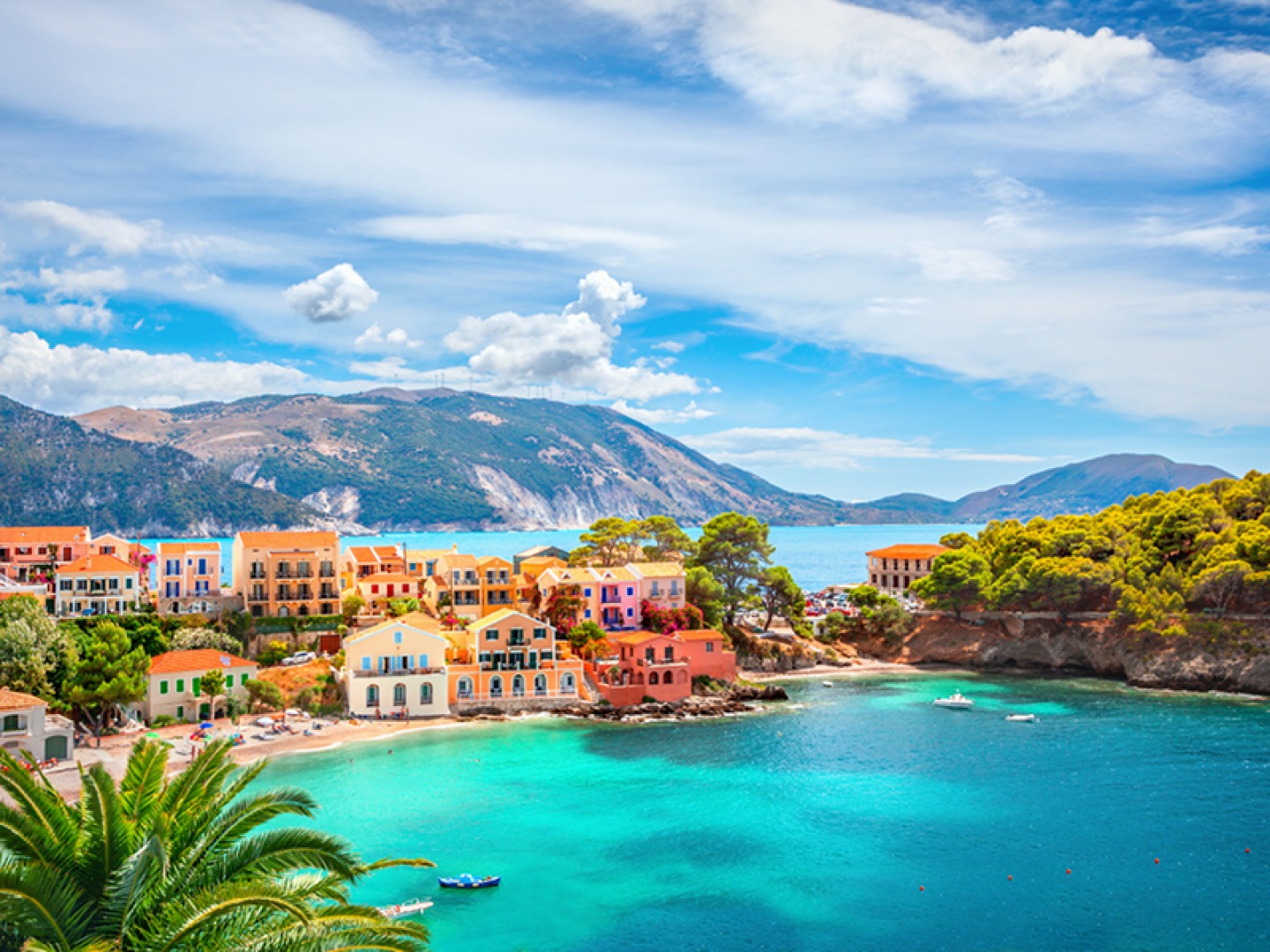
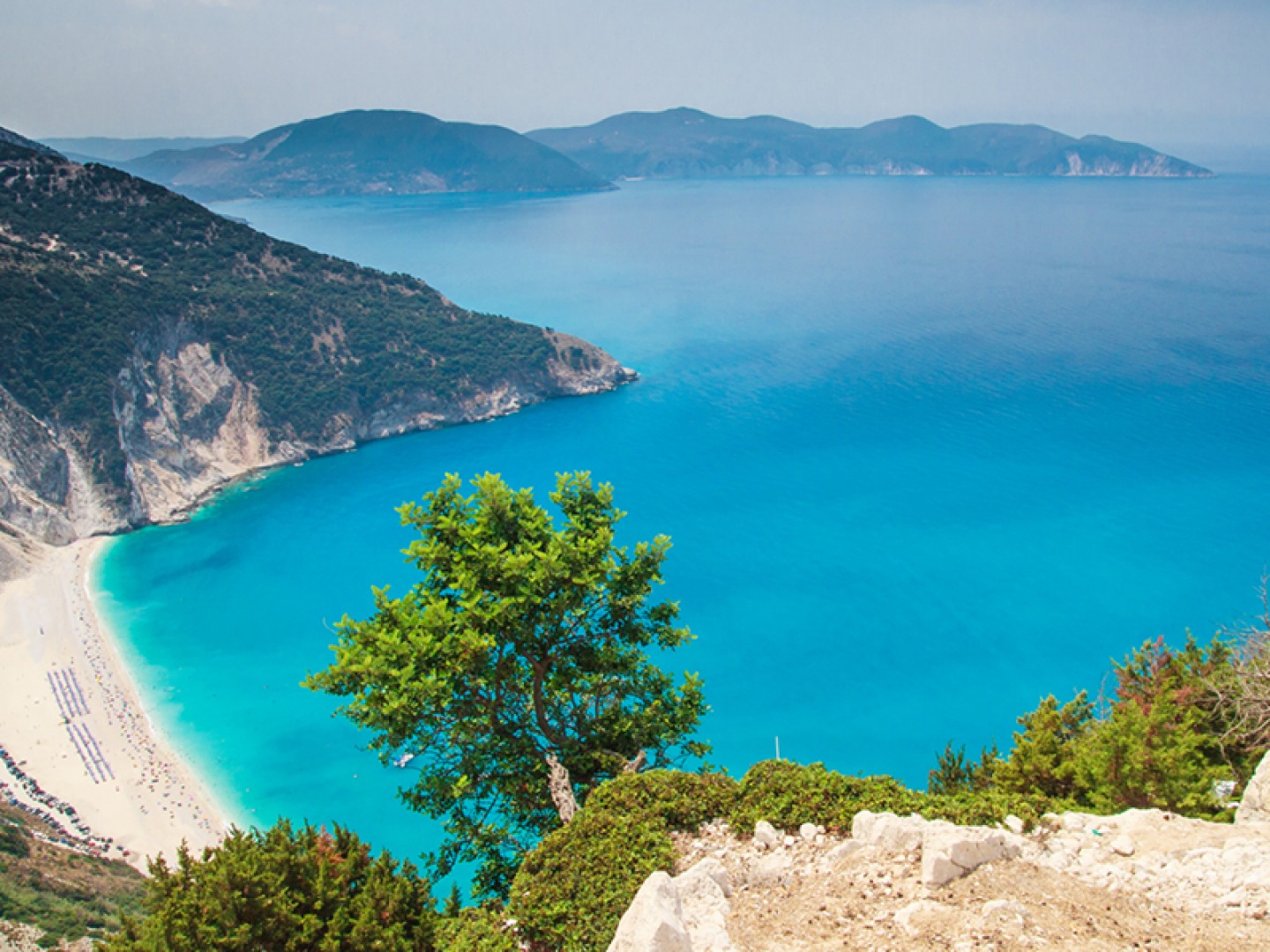
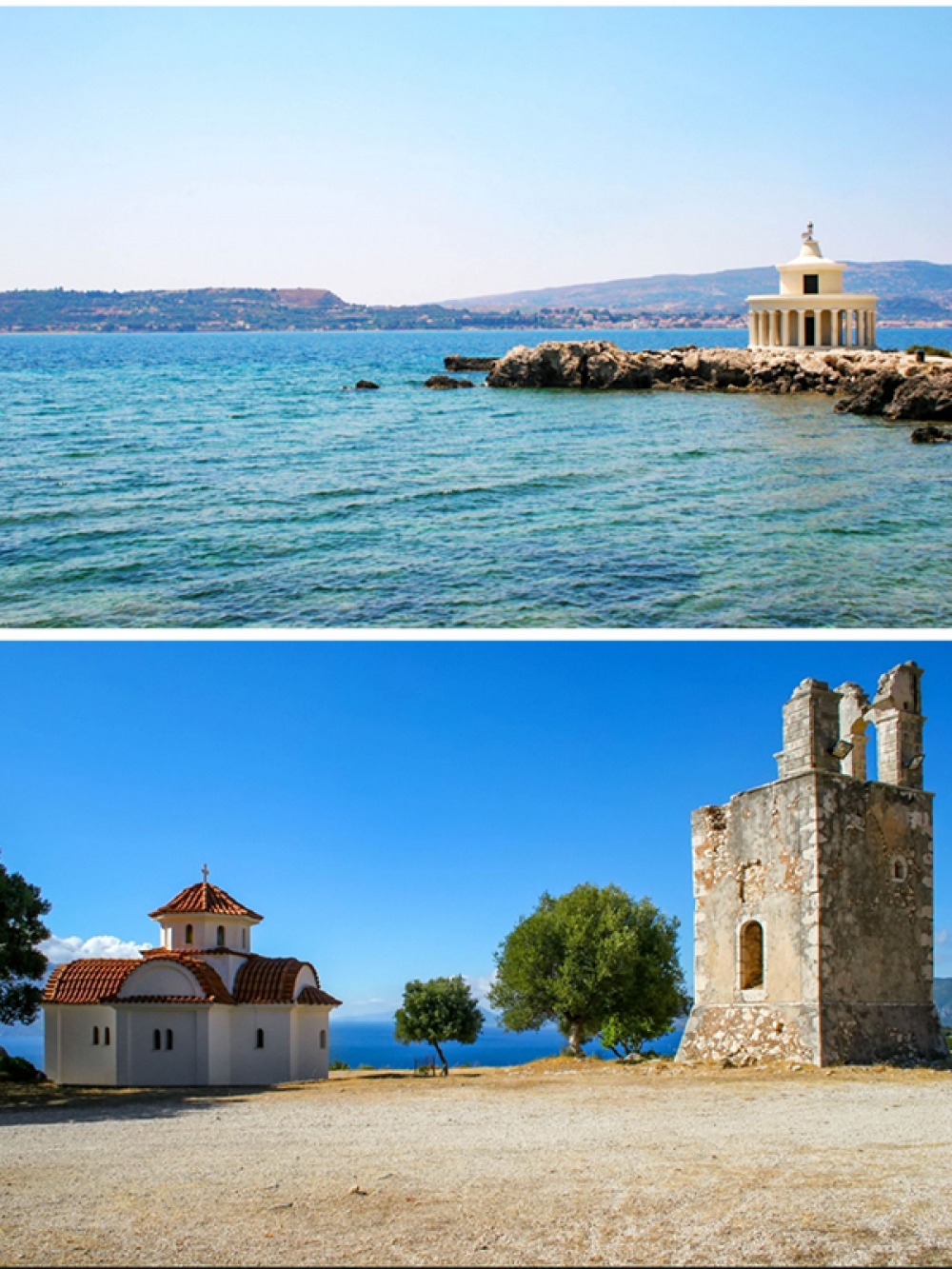
HISTORY HOT SPOTS
The Sea Lake of Melissani
Enter the cave through an underground path and jump onto one of the boats to see the archaeological excavations dating back to the 3rd and 4th century BC. When the sun is overhead the cave is transformed by sunlight hitting the turquoise water, turning the whole cave bright blue. A viewing platform on top of the cave is a life-saver for anyone who suffers from claustrophobia!
The Cave of Drogarati
To the south of Sami this incredible cavern is home to plenty of stalactites (many of which are thought to resemble dolphins) and stalagmites. Estimated to be more than 150 million years old, it is known locally as the Concert Cave thanks to a large underground chamber with exceptionally good acoustics and room for up to 500 visitors.
Castle of St George
Standing high on a hill above the village of Peratata, this polygonal structure dates back to the Byzantine period, but it was the Venetians who altered it to what it is today, albeit in a ruined form following the 1953 earthquake. In its glory days the castle walls encompassed a whole town – the capital of the island – and it was home to many islanders, public buildings, store rooms, churches, hospitals and a prison.
Lighthouse of Argostoli
Constructed by the British in 1828, this circular doric structure which juts out into the sea is rather unusual in terms of a lighthouse, but its spectacular position alone makes it worth a visit.
Mount Ainos
The only National Park found on a Greek Island, Mount Ainos covers 3,000 hectares and reaches up to 1,628 metres, but what makes it even more unusual is that a single species of rare fir (the Abies Cephalonic) grows here at high altitude and covers more than two thirds of the park.
Monastery of Argilion
On a hill above the bay of Sami, this monastery remains an important religious site for locals. Founded in the 18th century by two shepherds who had found a miracle-working icon of the Virgin Mary on that same spot in 1722, the shepherds became the first monks in the monastery. The original icon has been incorporated into a larger icon and remains in the church today.
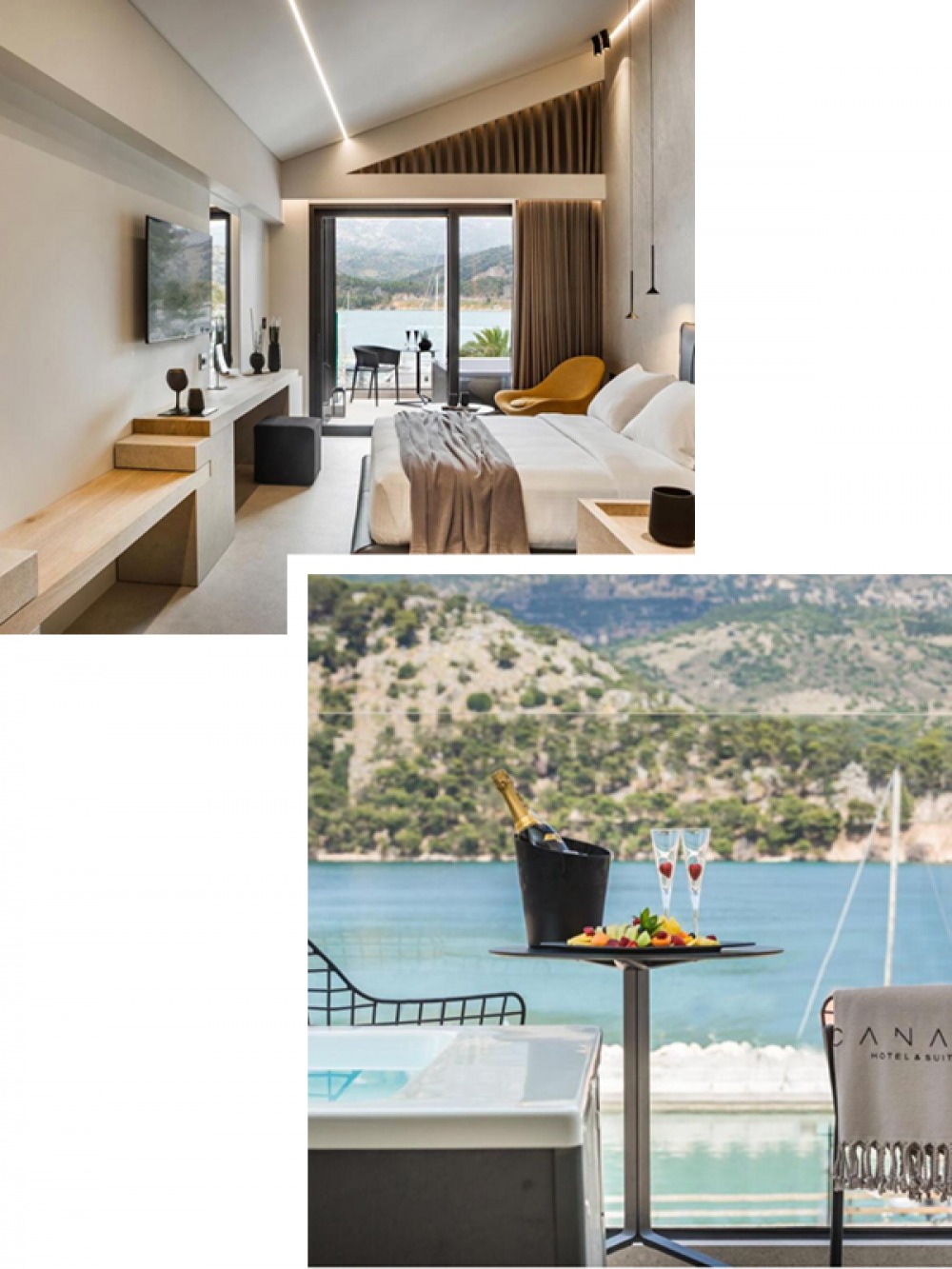
WHERE TO STAY
Urbanists will love Argostoli. Stroll along the palm-lined waterfront and watch the boats offloading the night’s catch, grab a coffee or lunch at one of the many cafés, and admire the loggerhead turtles who patrol the clear waters looking for fish scraps. Just behind the waterfront is the pedestrianised Plateia Valianou with its many traditional shops interspersed with upmarket stores, and the large square which is a social hub for locals and visitors alike and where you can find musicians singing and playing as they stroll through the surrounding narrow streets.
Stay at the Canale Hotel & Suites, one of Argostoli’s smartest hotels, with an outdoor pool and large garden. Every room has a sea view but opt for one with a sun terrace and hot tub and soak up the views from your own little piece of Greek heaven.
Eat at Ampelaki, a traditional Greek restaurant serving delicious seafood and an unmissable patsavouropita for dessert. Il Borgo is a great place for a long, lazy lunch, or head to Paralos for pizza, Sepia for delicious sushi, and Spathis Bakery for traditional Greek desserts and pastries.
For those looking for a quieter escape, Assos is a small, picturesque coastal village popular with couples. Rebuilt by the French after the earthquake, the village square has been renamed Paris Square as a tribute to the French workforce. Curving around a small bay with a pebble beach, the terraced-style properties cluster above the sea and below the 15th century castle. Assos is just a few minutes from the must-visit Myrtos Beach.
Accommodation is not as plentiful here so be sure to book well in advance. Our choice? The Myrtos Bay Apartments just 700 yards from Myrtos Beach, with your own private balcony or garden, and sea views.
Eat at Hellenic Bistro for great seafood, or Platanos where the local suckling pig is a must-try. Grab a cocktail at 3 Wise Monkeys and head to Alexandros, popular with locals, for a relaxed dinner under the trees.
For more information on Kefalonia visit greeka.co Jet2 and Tui fly direct to Kefalonia from Newcastle during the summer season.







